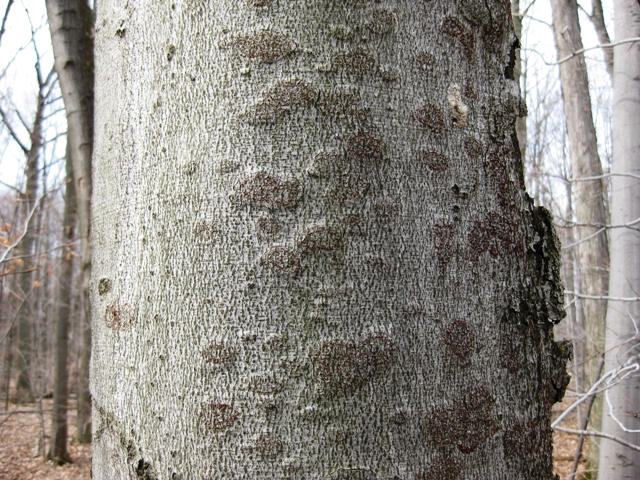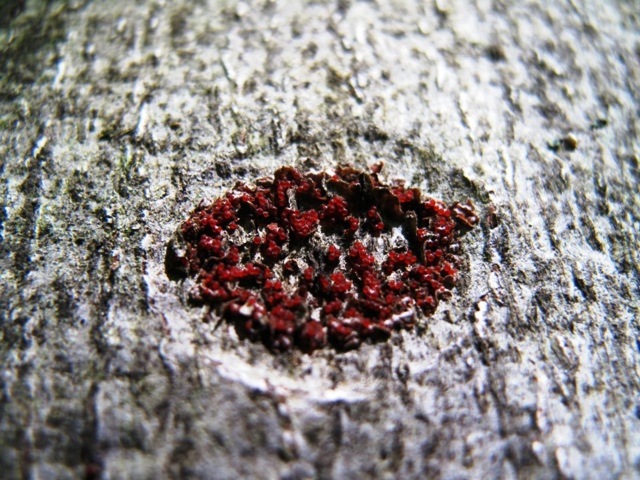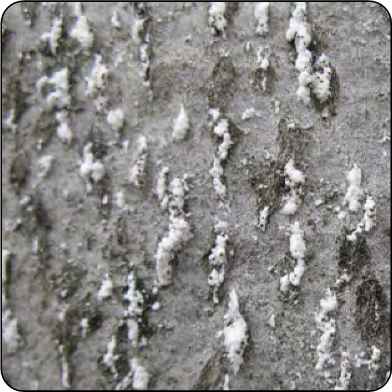Beech bark disease
Information about beech bark disease, a forest insect (Cryptococcus fagisuga) and disease (Neonectria faginata) complex found in Ontario.
Overview
- Invasive – native to Europe.
- Beech bark disease is an insect-fungus complex caused by a beech scale insect and a canker fungus.
- The disease causes severe cankering, deformation of the stem and eventually tree mortality.
- Trees die as a direct result of this disease or in combination with other stresses.
- The disease is advancing through much of the range of beech in Ontario.
“Invasive” refers to a species that has moved outside of its native habitat and threatens the new environment, economy or society by disrupting local ecosystems.
Host species
This disease is found on American beech (Fagus grandifolia) and European beech (F. sylvatica L.), and is most often found in mixed forests with sugar maple and hemlock present.
Characteristics and life cycle
- Beech scale insects are spread by the wind, animals and the movement of beech wood with intact bark.
- Healthy beech trees are attacked by the insects which rapidly increase in population over a period of years.
- Feeding punctures made by the scale insects kill the living bark and produce cracks through which the causal fungus enters the tree.
- Fungal spores spread by rain splash and wind, enter into bark through the scale wounds.
- Reports of lag times between scale infestation and appearance of fungal infection range from approximately 2-10 years.
- The fungus causes small cankers which appear on the bark surfaces.
- Small orange-red fruiting bodies are produced in late summer and fall.


Symptoms and damage
- Wilting foliage.
- Leaves small in size and usually yellow.
- Thin crowns with trees lacking vigour.
- Tree branches and bole covered with waxy woolly secretions of beech scale insect.
- Beech bark disease cankers and fruiting bodies present.
- Disease typically kills large trees first, significantly altering stand structure and dynamics that reduce biodiversity and negatively impacts wildlife.

Control measures
Do not move firewood as beech scale insects and fungus could unintentionally be spread to non-infested stands. Retain resistant trees that have not been attacked by scale insects in areas which have high scale infestation levels. When managing forests, retain beech with no signs of scale.